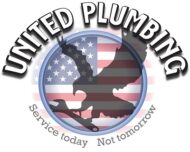Since water flows downhill, gravity is a primary consideration for your plumbing. Wastewater from your sink drain or toilet typically flows downward through your pipes and travels away from your property via the main sewer line.
But some homes have part of their plumbing beneath this main sewer line. If you have a toilet or sink in your basement beneath the main sewer line, you'll need to prevent sewer gas and sewage from backing up into these lower areas and the waste water from these fixtures will need to travel upward through your pipes to reach the main sewer line.
Water won’t magically travel upward on its own, so without a little help, everything would back up, potentially damaging your plumbing or filling your home with sewage.
Some homes have extraordinarily long sewer lines without enough downward pitch, so the wastewater needs a “boost” to successfully travel through it.
That’s where a sewer ejection pump comes in. Typically installed when a home is built, it has a basin that collects the wastewater as it travels down your drains.
Once the amount of waste in the basin reaches a certain capacity, the float kicks in and turns on the pump that ejects it into the main sewer line for proper disposal. Think of this as a sort of sump pump for your wastewater.
Most homes don't have a sewer ejector pump, but for those who do, it's one of the most important parts of your plumbing and needs to work properly to prevent sewer gas in Springfield Missouri. Here are some tips for maintaining it properly.
Don’t Clog The Drains
This is true for all of your plumbing, but especially any fixtures that are connected to a sewer ejection pump. Wipes, diapers, feminine products and paper towels are just some of the things you shouldn’t flush or put down the drain to prevent clogs in your sewer ejection pump.
There are sewer ejection pumps that include grinders and sewer ejection pumps that do not. Grinder pumps include a cutting mechanism that can chop the harder solids into smaller pieces, creating a slurry that can more easily pass through pipes. Because the slurry is relatively fine, it can be pumped to a higher elevation than general sewage pumps.
Grinder sewer ejection pumps tend to use more power and are more expensive and are more commonly used in institutional and commercial applications. Though they can handle harder solids, they can still break down, so it's important to only flush items that belong in a toilet in the first place.
Keep It Oiled
If your lower level fixtures that are tied to a sewer ejection pump get a lot of use, then the motor can wear out more quickly. Keeping the many moving parts of your sewer ejection pump properly lubricated will allow it to continue working longer at peak efficiency.
Check Your Alarm
Most sewer ejection pumps have an alarm that goes off if the water level ever rises beyond the recommended parameters. If this happens, it might mean that a part of the pump isn’t working properly or that something is blocked up that won’t allow waste to flow freely.
You will want to act quickly if the alarm goes off and figure out what triggered it to prevent having a major mess to clean up.
If you’re building a new home on sloped terrain that needs a sewer ejection pump or are having problems with an existing sewer ejection pump that you currently have, United Plumbing can help. Call us any time, 24 hours a day, seven days a week, for all of your plumbing needs.

